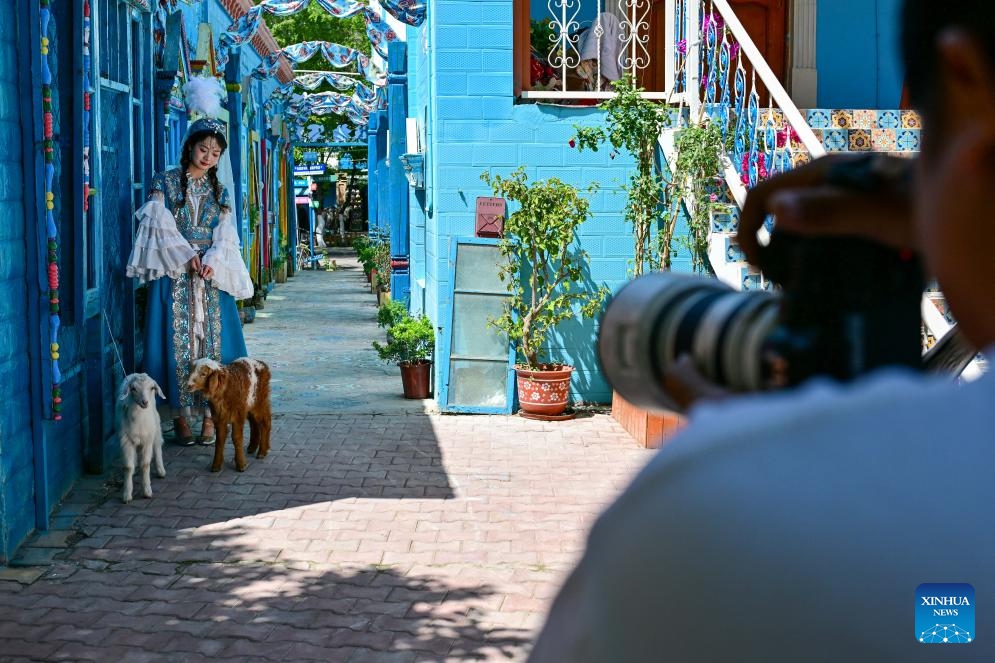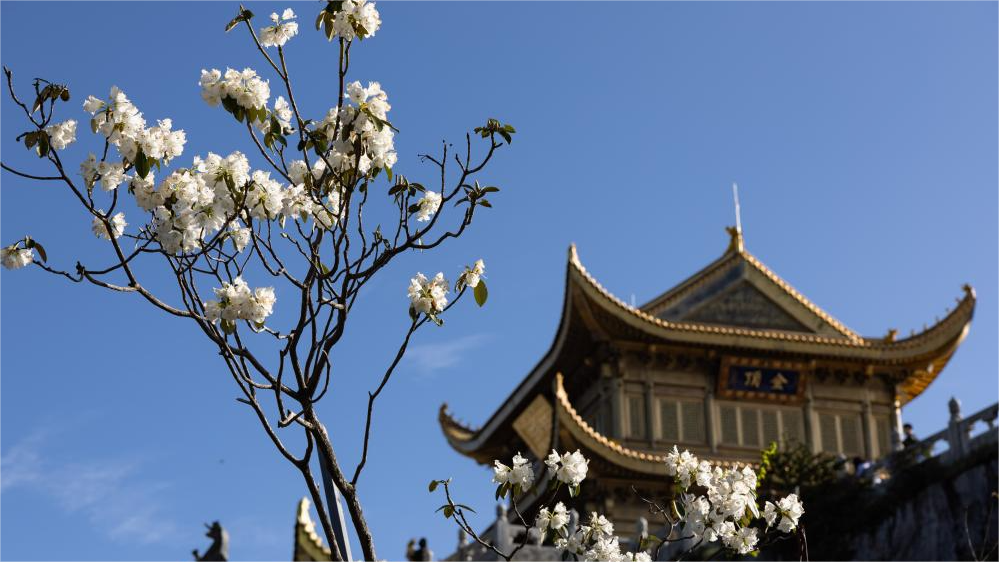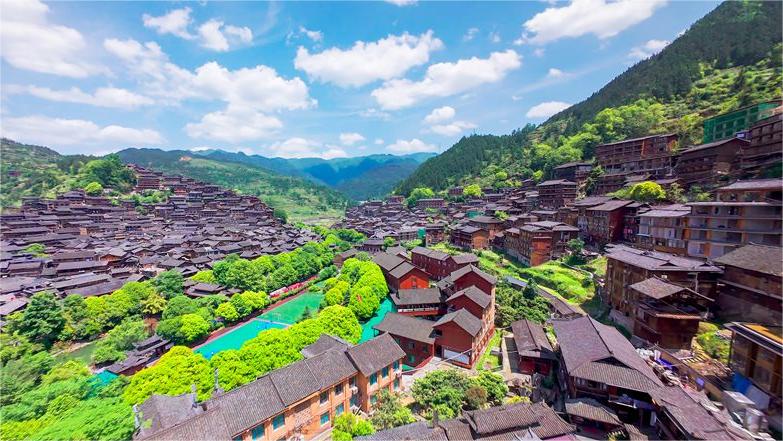Xinjiang maps plan to welcome more domestic and intl travelers

A tourist poses for photos on Liuxing Street in Yining City, Ili Kazak Autonomous Prefecture, northwest China's Xinjiang Uygur Autonomous Region, May 10, 2024. (Photo: Xinhua)
Northwest China's Xinjiang Uygur Autonomous Region is set to experience further growth in its local tourism economy after the country's tourism authorities issued a three-year plan to promote regional tourism, with the first year receiving 178 million yuan in investment.
From 2024 to 2026, the Ministry of Culture and Tourism will increase capital investment and resources in Xinjiang from five aspects, tourist sourcing, destination, product supply, transportation services, and publicity and promotion, so as to promote the high-quality development of the region's tourism industry.
The plan was announced at the 2025 Xinjiang Tourism Development Conference in the city of Turpan on Monday. This marks a new effort from the country level to boost Xinjiang's local tourism sector.
Xinjiang has been a popular tourist destination for domestic travelers in recent years. Data showed in 2023, the number of tourists in Xinjiang reached a record of 265 million from home and abroad, a year-on-year increase of 117.04 percent and the total tourism revenue reached 296.715 billion yuan, up 226.93 percent year on year.
In 2023, Xinjiang added 563 new travel agencies, and nearly 25,000 tour guides gained employment through tourism services. There are more than 370,000 business entities engaged in tourism in Xinjiang. Rural tourism, in particular, not only revitalizes old villages, old houses and old structures, but also turns passenger flow into sales of agricultural and related products.
Starting from 2024, Xinjiang continued to win the hearts of tourists. In the first quarter of this year, Kashgar, one of the most popular destinations in the region, welcomed 7.169 million domestic tourists, generating tourism income of 6.08 billion yuan.
Xinjiang has also become a hot spot for international tourists from Central Asia.
In the first quarter, Xinjiang welcomed 869,100 inbound tourists, generating international tourism revenue of $594 million, marking respective increases of 421.49 percent and 353.77 percent compared with the same period last year, according to immigration authorities.
Industry observers stated that the surge in the tourism industry can be attributed to Xinjiang's seizing opportunities from the Belt and Road Initiative, leading to a continuous expansion of the local tourism economy.
Deeper tourism exchanges between Xinjiang and countries like Kazakhstan and Uzbekistan have been driven by the implementation of visa exemption policies, as well as increased flights from Urumqi to Central Asian countries, they added.
About 220,000 travelers passed through the Horgos port in the first three months of this year, with a peak of 3,000 people in a single day, according to statistics from the Horgos border checkpoint.
Also, data from Khunjerab Port showed that since its opening in April this year, the flow of passengers has continued to rise, surpassing 5,000, a 454 percent increase compared to the same period last year.
Thriving tourism in Xinjiang has benefited from a stable environment where people can travel safely and securely. There is no need to worry about personal safety while traveling in Xinjiang, according to Wang Jiang, an expert at the Institute of China's Borderland Studies at Zhejiang Normal University, told the Global Times on Monday.
Xinjiang stands out as a popular destination for both domestic and international travelers especially in the wake of COVID-19 as the domestic tourism market embraces a bounce back , Wang said.
The real face of Xinjiang has become familiar to the wider world over recent years following more visitors sharing their real experiences on social media, refreshing the stereotypes portrayed by some mainstream Western media. One video posted by an influencer ''Sun Kissed Bucket List'' described a downtown area of the capital city of Urumqi, Xinjiang as "little New York" which is full of big international brands and big avenues. Wang said that slander and smear based on groundless claims will all be debunked as facts speak for themselves.
Officials from the region said they aim to attract 300 million visits throughout 2024, which is a challenge but remains achievable, Wang said, adding that Xinjiang is emerging as an attractive place for visitors not only for its secure environment, but also cultures of multiple ethnic minorities as well as various natural resources.
Photos
Related Stories
- Breathtaking views of cloud-cloaked mountain, lake in NW China's Xinjiang
- TIR assembly center to facilitate cross-border trade established in China's Xinjiang
- BRI to bring China's Xinjiang, Pakistan together for shared development, prosperity -- experts
- Senior CPC official highlights counter-terrorism, social stability in Xinjiang
- Xinjiang makes strides in high-quality development
- 15-year-old Xinjiang teenager comes out youngest Chinese summitting Mt. Qomolangma
Copyright © 2024 People's Daily Online. All Rights Reserved.









